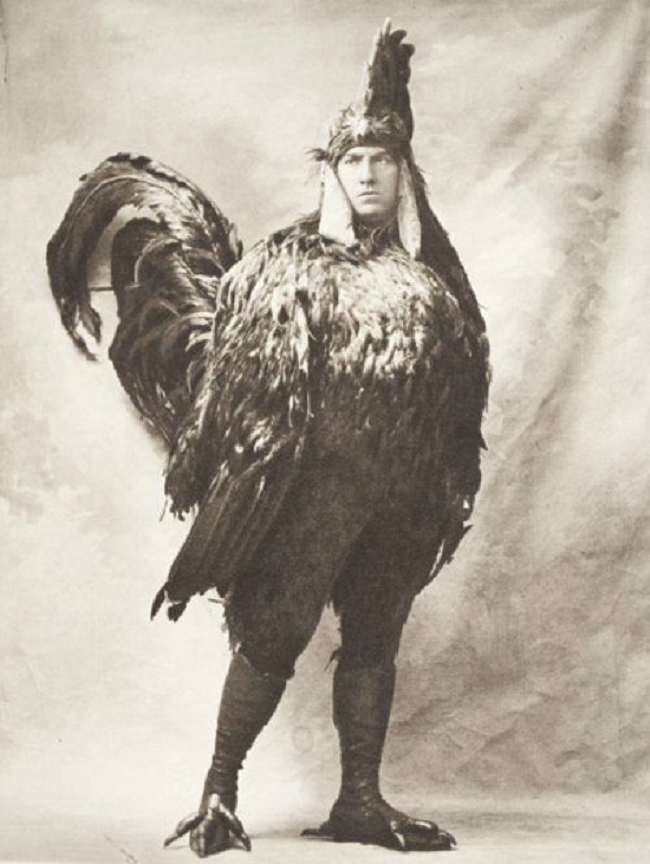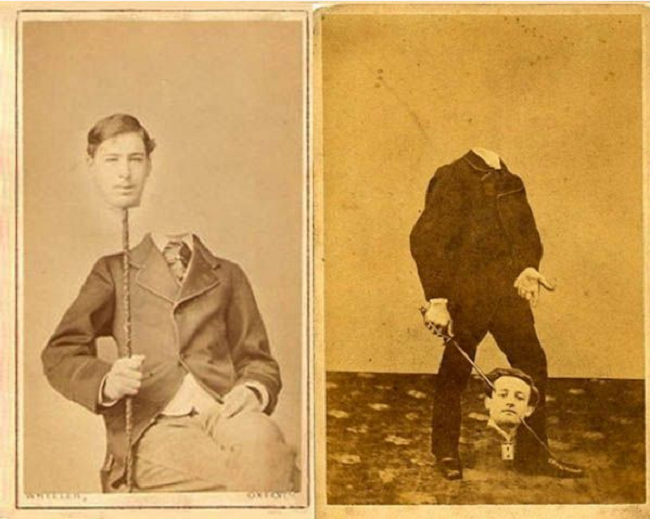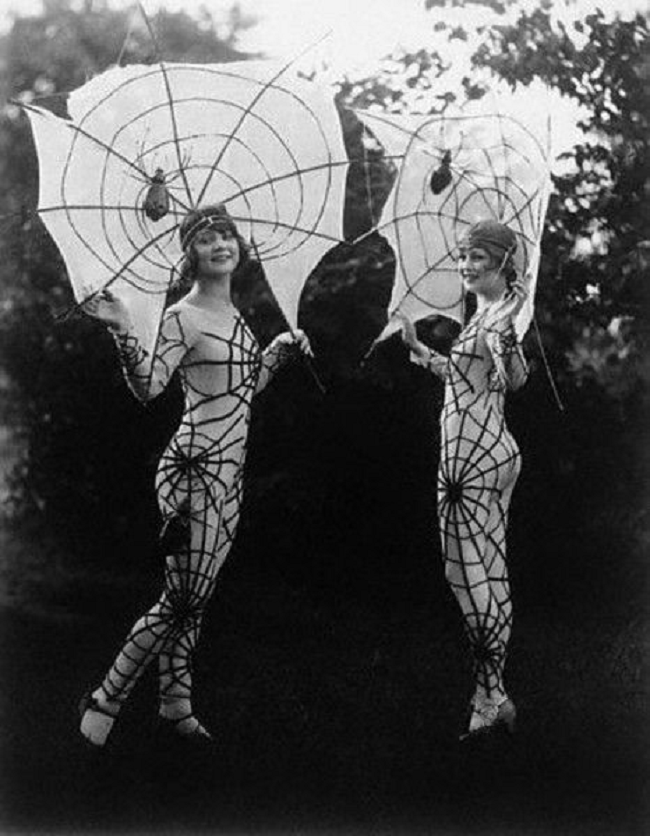Denim Shorts: A Brief History of the Daisy Dukes
Daisy Duke denim shorts are a vintage fashion staple, but when did they become so popular? Have a read through this week's "Brief History..." to learn Daisy Dukes shorts' origin and how it became such a summer essential... An infamous shoot of Debbie Harry at Coney Island in 1977, shot by Bob Gruen, sealed her place as a style icon; mixing New York punk and her own rebelliously sexy styling.

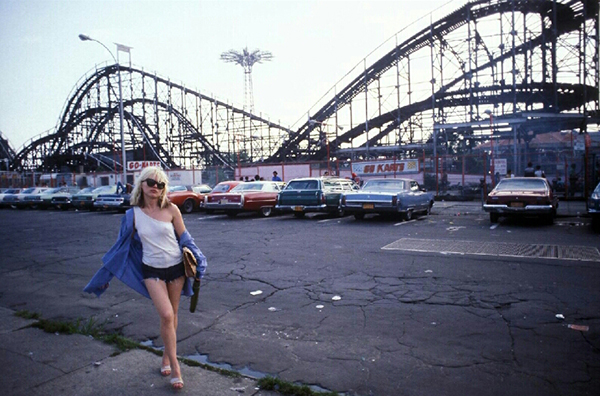
The original Daisy Duke, named after the character of the same name in The Dukes of Hazzard (1979), caused hormones to rage as she cruised around in her Jeep and worked as a waitress in the local hangout 'The Boar's Nest'.
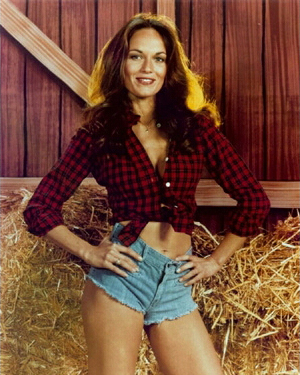
Throughout the '70s & '80s, Lemmy from Motörhead was famed for wearing arguably the shortest shorts a man can sport without breaking public decency laws!
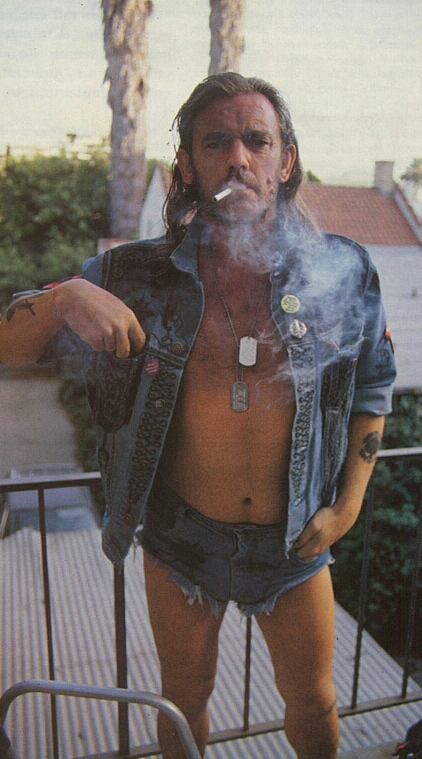
Guns'n'Roses front man Axl Rose made Daisy Duke jean shorts cool for men to wear and appealing for women to look at through the high point of '90s slacker rock.
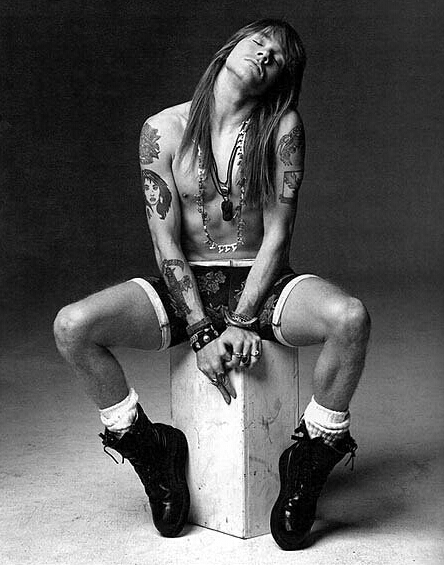
In 2003, Beyonce launched herself as a solo force to be reckoned with. In her 'Crazy In Love' video the Duke was reborn for a new generation...
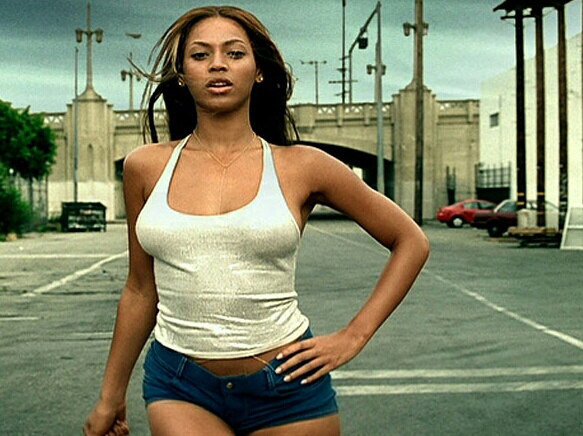
Shop Women's Denim Shorts here! Shop Men's Denim Shorts here! Shop All Denim Shorts here!
A Brief History Of... The Paper Dress
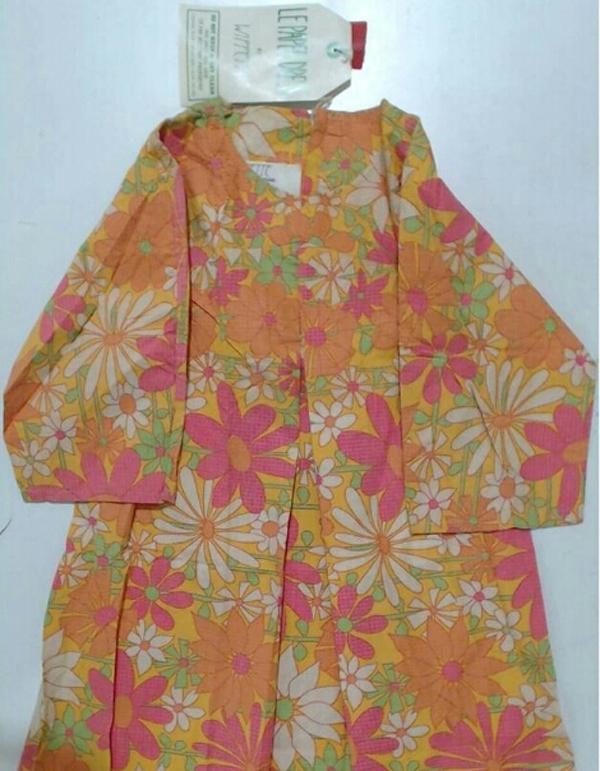 The sixties signalled exciting changes in pop culture, music, art and of course
fashion! In the '60s fashion became fast, fun and affordable, the artifice and prestige that had previously surrounded the production and purchase of fashion gave way to a new breed of consumer, hip young things who had some disposable income and wanted to spend it!
The sixties signalled exciting changes in pop culture, music, art and of course
fashion! In the '60s fashion became fast, fun and affordable, the artifice and prestige that had previously surrounded the production and purchase of fashion gave way to a new breed of consumer, hip young things who had some disposable income and wanted to spend it! 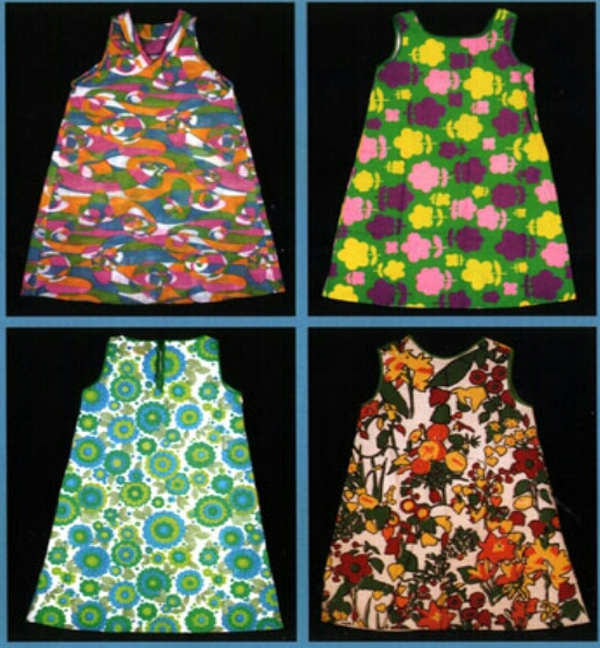 The paper dress characterises this fast, fun and affordable attitude within 60s fashion. Paper clothes and accessories had been around since the 19th century but it was the American Scott Paper Company that first mass-produced paper fashion in 1966 as part of a marketing stunt. Customers could send in a coupon and $1.25 to receive a dress made of "Dura-Weve". Dura Weave is a cellulose based material, which had been patented in 1958. The dresses of course had their many pitfalls they ripped, you couldnt wash them, and there was the distinct possibility of being turned into a human fireball if you per chance dropped your cigg on yourself - talk about disposable fashion.
The paper dress characterises this fast, fun and affordable attitude within 60s fashion. Paper clothes and accessories had been around since the 19th century but it was the American Scott Paper Company that first mass-produced paper fashion in 1966 as part of a marketing stunt. Customers could send in a coupon and $1.25 to receive a dress made of "Dura-Weve". Dura Weave is a cellulose based material, which had been patented in 1958. The dresses of course had their many pitfalls they ripped, you couldnt wash them, and there was the distinct possibility of being turned into a human fireball if you per chance dropped your cigg on yourself - talk about disposable fashion. 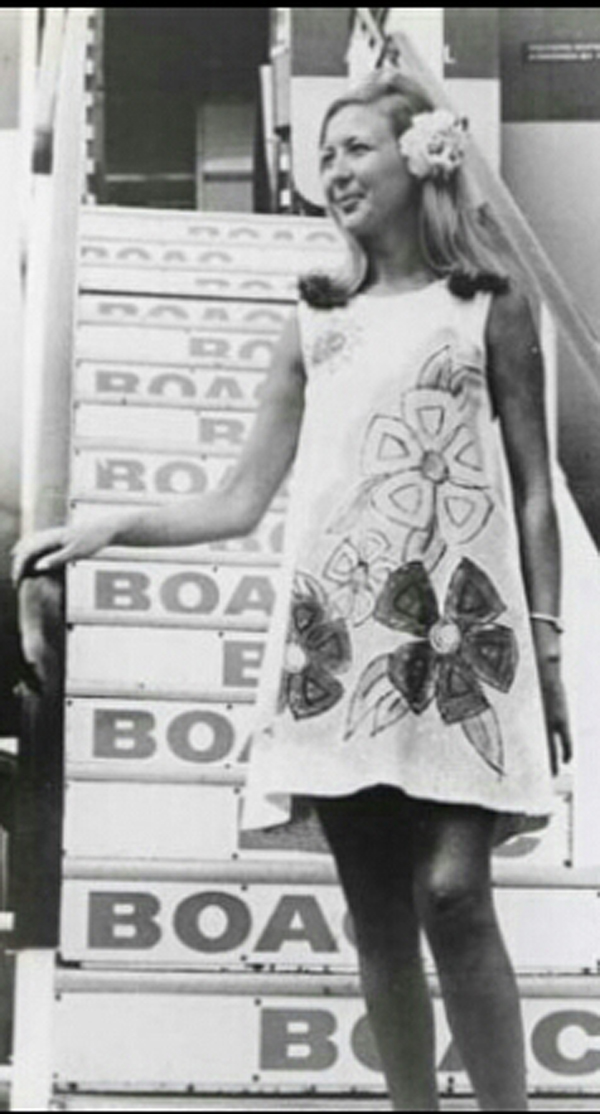 The 1960s paper dresses were often covered in bright, colourful psychedelic and floral patterns. The king of consumer art, Andy Warhol, of course got in on the trend, creating a design based on his famous Campbell's soup can print.
The 1960s paper dresses were often covered in bright, colourful psychedelic and floral patterns. The king of consumer art, Andy Warhol, of course got in on the trend, creating a design based on his famous Campbell's soup can print. 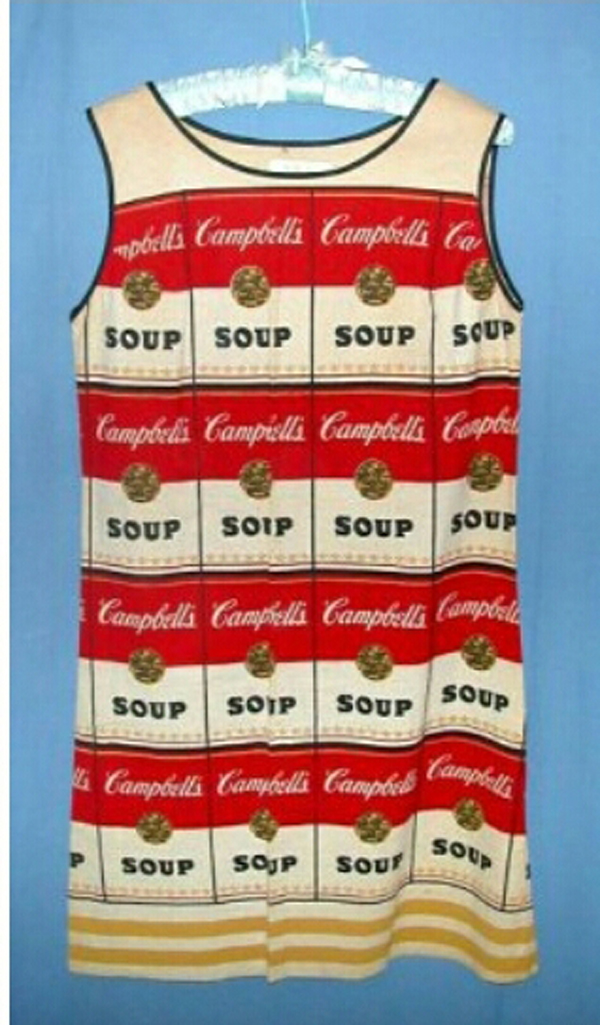 There was a resurgence of the paper dress trend in the 1990s. Throughout this decade designers such as Hussein Chalayan and Sarah Caplan (of the company MPH) experimented with Tyvek technology to create a washable, tear poof, water resistant and recyclable paper clothing. Bjork wore one of Hussein Chalayans paper jackets trimmed with signature airmail stripes for her Post album cover in 1995.
There was a resurgence of the paper dress trend in the 1990s. Throughout this decade designers such as Hussein Chalayan and Sarah Caplan (of the company MPH) experimented with Tyvek technology to create a washable, tear poof, water resistant and recyclable paper clothing. Bjork wore one of Hussein Chalayans paper jackets trimmed with signature airmail stripes for her Post album cover in 1995. 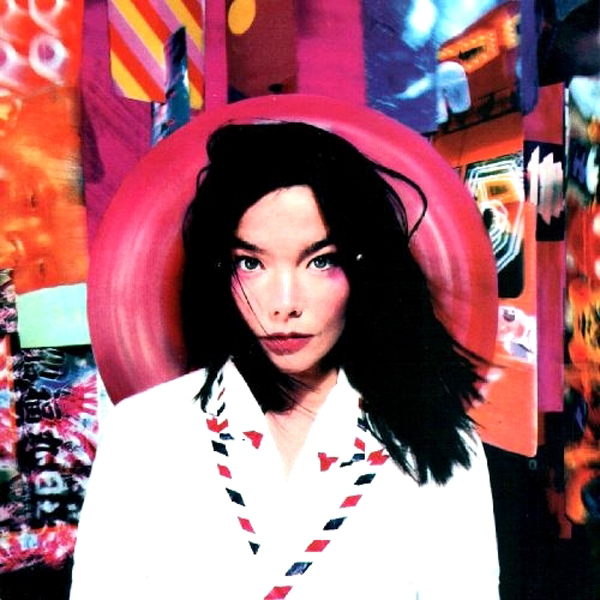
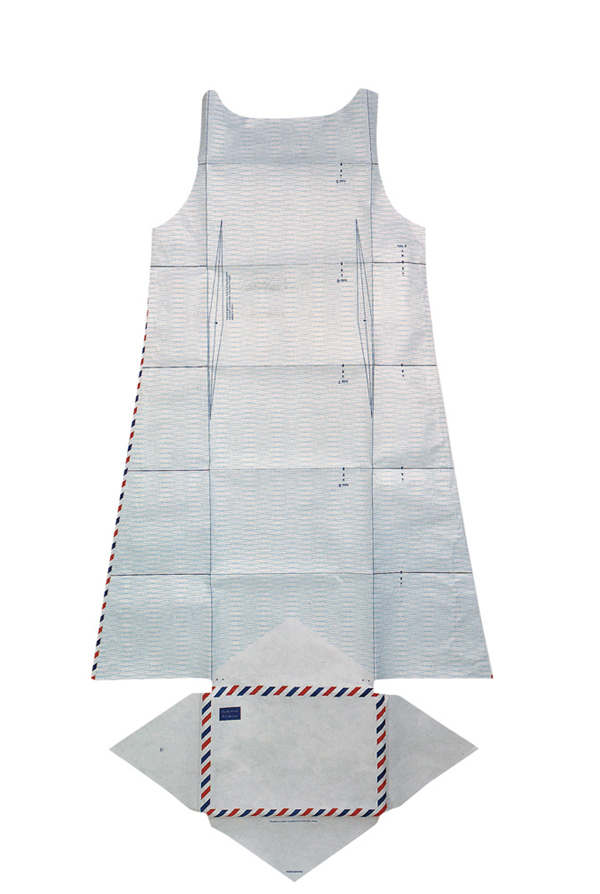 This partnering of fashion and technology typifies much of the excitement that surrounded the concepts of sustainable fashion and technology at the turn of the millennium. Perhaps, it was (and still is) the 1990s rebellious answer to the fast fashion of the 1960s.
This partnering of fashion and technology typifies much of the excitement that surrounded the concepts of sustainable fashion and technology at the turn of the millennium. Perhaps, it was (and still is) the 1990s rebellious answer to the fast fashion of the 1960s.
A Brief History of... Fringe Benefits
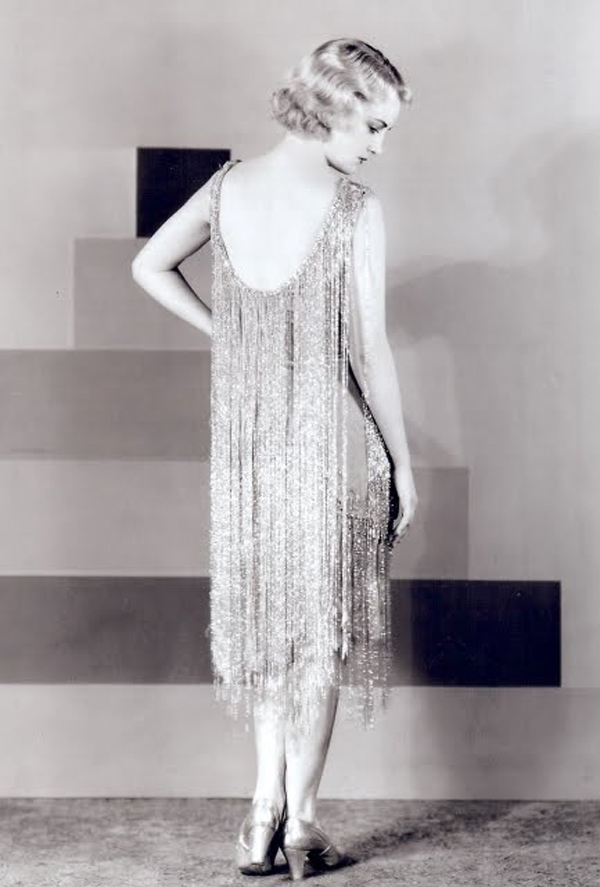 1920's Tasselled Flapper Dress (image courtesy of silverscreenmodiste.com) Designers of the decade such as Madeleine Vionnet and British designer Charles Worth pioneered the trend. In 1927 Worth created a jazzy little number in fine silvery tasselled tinsel and Vionnet utilized a dramatic floral print and long sweeping fringe into her 1924 designs. The trend resurfaced again in the 1950's when fringe appeared on none other than the king of rock and roll, Elvis Presley. His fringed leather jackets attracted a legion of copycat enthusiasts. In the 1960s fringe returned to its original roots and took on a Native American influence. Originally Native Americans put fringing onto the bottom of their sleeves and jackets to help prevent rain droplets from soaking through (well whaddya know). '60s celebs such as Twiggy, Jane Shrimpton, Penelope Tree, Sonny and Cher, were all fans of fringed clothes that had a Native American feel to them.
1920's Tasselled Flapper Dress (image courtesy of silverscreenmodiste.com) Designers of the decade such as Madeleine Vionnet and British designer Charles Worth pioneered the trend. In 1927 Worth created a jazzy little number in fine silvery tasselled tinsel and Vionnet utilized a dramatic floral print and long sweeping fringe into her 1924 designs. The trend resurfaced again in the 1950's when fringe appeared on none other than the king of rock and roll, Elvis Presley. His fringed leather jackets attracted a legion of copycat enthusiasts. In the 1960s fringe returned to its original roots and took on a Native American influence. Originally Native Americans put fringing onto the bottom of their sleeves and jackets to help prevent rain droplets from soaking through (well whaddya know). '60s celebs such as Twiggy, Jane Shrimpton, Penelope Tree, Sonny and Cher, were all fans of fringed clothes that had a Native American feel to them.  Elvis Presley Fringe Jacket in 1973 (image courtesy of elvis.com.au)
Elvis Presley Fringe Jacket in 1973 (image courtesy of elvis.com.au) 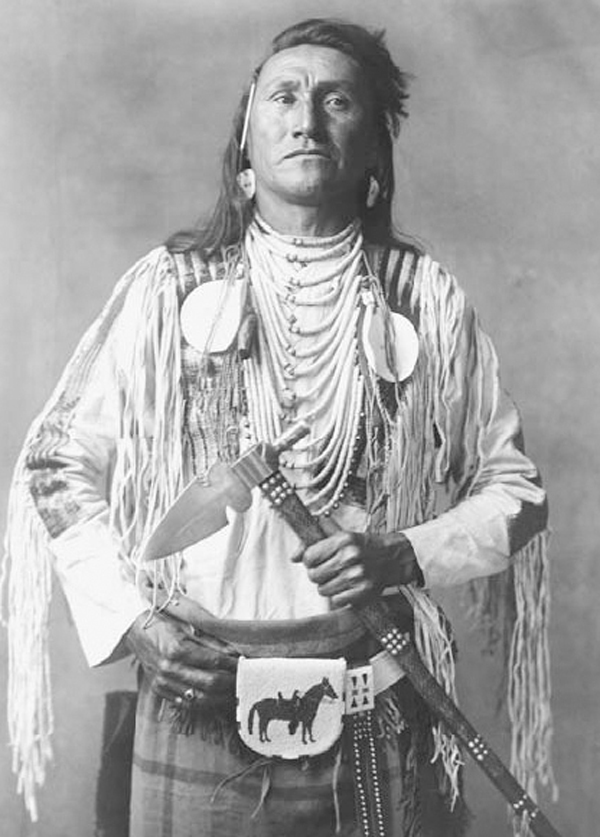 Traditional Native American Jacket (image courtesy of loc.gov)
Traditional Native American Jacket (image courtesy of loc.gov) 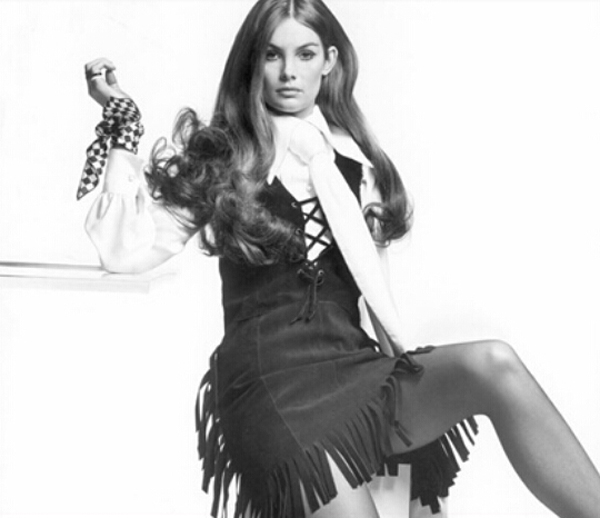 Jean Shrimpton in 1960's Vogue (image courtesy of fashionaddictsla.com) Bohemian belles and fellas of the 1970's adopted fringed suede to offset gypsy dresses and hippy tie-dyed tees. Looks which are still ubiquitous summer staples and festival favourites. In the 1980's designers such as Azzedine Alaia, Christian Lacroix and Giorgio Armani all championed the tassel in their collections. Alaia designed a beaded fringe dress for Tina Turner, which she wore for both Vogue Italia and Vogue America.
Jean Shrimpton in 1960's Vogue (image courtesy of fashionaddictsla.com) Bohemian belles and fellas of the 1970's adopted fringed suede to offset gypsy dresses and hippy tie-dyed tees. Looks which are still ubiquitous summer staples and festival favourites. In the 1980's designers such as Azzedine Alaia, Christian Lacroix and Giorgio Armani all championed the tassel in their collections. Alaia designed a beaded fringe dress for Tina Turner, which she wore for both Vogue Italia and Vogue America. 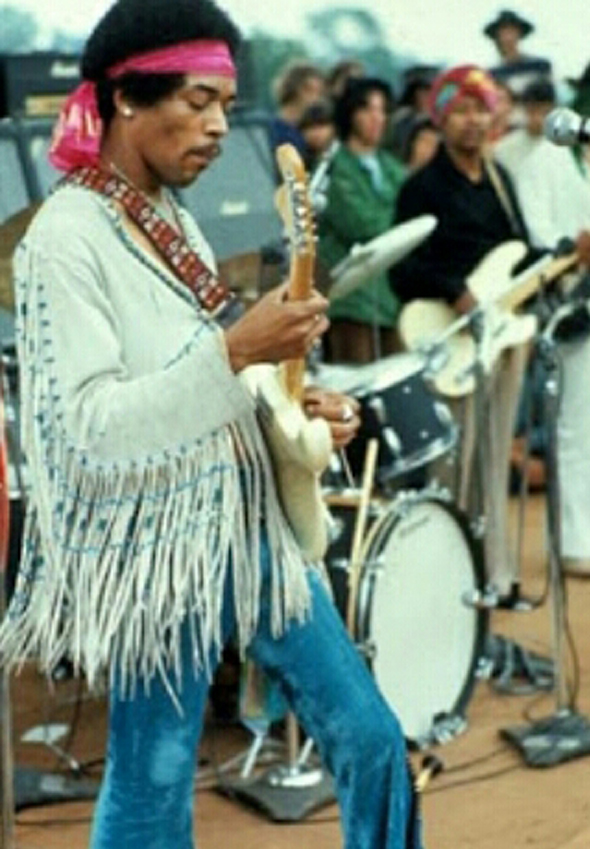 Jimi Hendrix at Woodstock (image by Henry Diltz courtesy of thefestivalist.com)
Jimi Hendrix at Woodstock (image by Henry Diltz courtesy of thefestivalist.com) 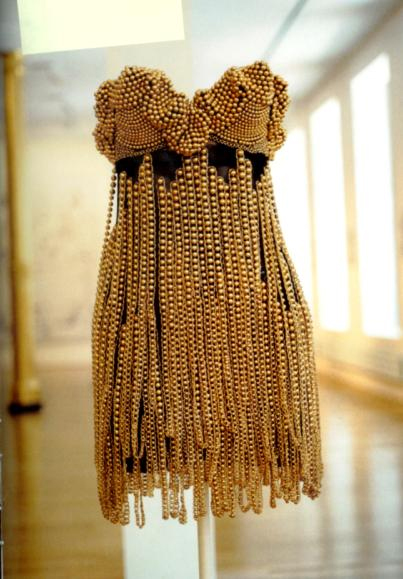 Tina Turner's Azzedine Alaia Dress for Vogue (image courtesy of bonafidechainblinger.com) Throughout the mid-nineties both Jean Paul Gaultier and John Galliano experimented with fringing in their collections; finding inspiration from the dress of Native Americans to traditional Chinese garments. The longevity of the tassel is testament to its staying power as a detail of choice among designers, rock stars and festivalgoers alike.
Tina Turner's Azzedine Alaia Dress for Vogue (image courtesy of bonafidechainblinger.com) Throughout the mid-nineties both Jean Paul Gaultier and John Galliano experimented with fringing in their collections; finding inspiration from the dress of Native Americans to traditional Chinese garments. The longevity of the tassel is testament to its staying power as a detail of choice among designers, rock stars and festivalgoers alike.  Jean-Paul Gaultier's Fringe Glasses and John Galliano's Fringe Dress (images courtesy of couturecarrie.blogspot.co.uk & tumblr)
Jean-Paul Gaultier's Fringe Glasses and John Galliano's Fringe Dress (images courtesy of couturecarrie.blogspot.co.uk & tumblr)
A Brief History of the Strapless Dress
 Libby Holman, 1932 The then named 'naked look' remained popular after the Second World War with the most famous appearance being that of Rita Haywrth in Gilda, 1946. This mid-century icon showcased just how to wear a strapless dress- without the risk of it falling off!
Libby Holman, 1932 The then named 'naked look' remained popular after the Second World War with the most famous appearance being that of Rita Haywrth in Gilda, 1946. This mid-century icon showcased just how to wear a strapless dress- without the risk of it falling off!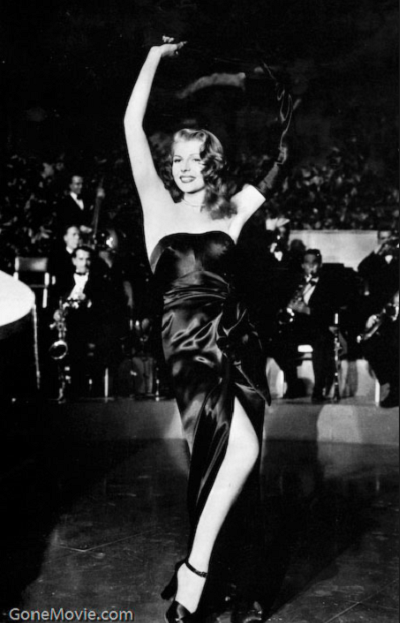 Rita Hayworth, Gilta 1946 However, this item of choice didn't hit the big time for another few decades yet! This shoulder bearing attire caused controversy among the rather conservative and religious groups, namely the Catholics who campaigned in opposition to such 'immodest' clothing. This included two-pieces and strapless swimsuits- shock horror! In the 1950s the US army even forbid brides coming to events wearing these dresses.
Rita Hayworth, Gilta 1946 However, this item of choice didn't hit the big time for another few decades yet! This shoulder bearing attire caused controversy among the rather conservative and religious groups, namely the Catholics who campaigned in opposition to such 'immodest' clothing. This included two-pieces and strapless swimsuits- shock horror! In the 1950s the US army even forbid brides coming to events wearing these dresses. 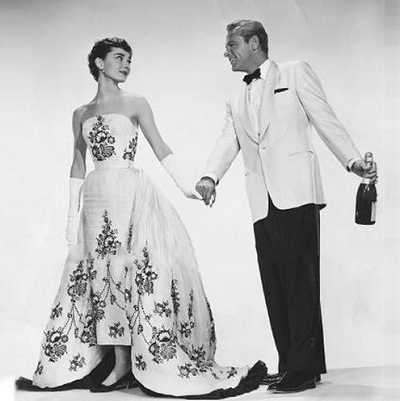 By the 1970s, the ability to weave in elastic meant that designers like Halston had the ability to design different shape sleeveless dresses... Enter the day time knitted tube top. A brief interlude towards the end of the 70's saw rise of peasant inspired dresses and the ever popular off-the-shoulder wedding dresses! But don't get too ahead of yourself, we aren't quite there yet...
By the 1970s, the ability to weave in elastic meant that designers like Halston had the ability to design different shape sleeveless dresses... Enter the day time knitted tube top. A brief interlude towards the end of the 70's saw rise of peasant inspired dresses and the ever popular off-the-shoulder wedding dresses! But don't get too ahead of yourself, we aren't quite there yet...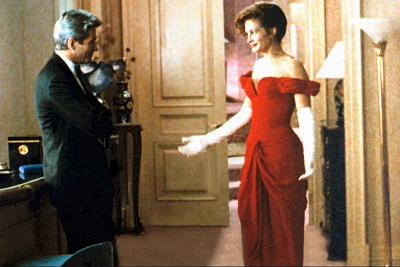 Pretty Woman It wasn't until the 1980's when strapless dresses were truly popularised among the masses. Stretch and elastic fabrics were used in favour of boning or interior structure, therefore lending itself to a wearable and practical wardrobe- et voilà, it the became all the rage!
Pretty Woman It wasn't until the 1980's when strapless dresses were truly popularised among the masses. Stretch and elastic fabrics were used in favour of boning or interior structure, therefore lending itself to a wearable and practical wardrobe- et voilà, it the became all the rage!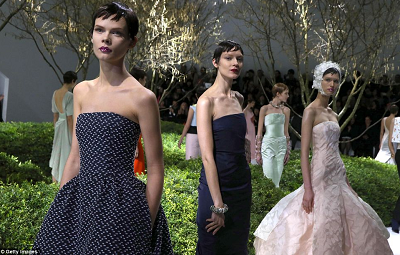 Dior
Dior Chanel, Isabel Marant, Hussein Chalayan and Chloe- S/S '14 Whilst in the early 21st century, many schools and workplaces specifically forbid strapless garments as part of their dress code, they have become common place in our modern wardrobes. Today you can take inspiration from the ultimate risky shoulder-less piece, the uber chic Dior leather number, OR reinvent this style and embrace it at all hours with off- the- shoulder sweaters or the one-shoulder variety. Covet minimalist shapes with a pair of pumps and you're good to go. Less is certainly more in the case.
Chanel, Isabel Marant, Hussein Chalayan and Chloe- S/S '14 Whilst in the early 21st century, many schools and workplaces specifically forbid strapless garments as part of their dress code, they have become common place in our modern wardrobes. Today you can take inspiration from the ultimate risky shoulder-less piece, the uber chic Dior leather number, OR reinvent this style and embrace it at all hours with off- the- shoulder sweaters or the one-shoulder variety. Covet minimalist shapes with a pair of pumps and you're good to go. Less is certainly more in the case.
Vintage Academy: 1920s Halloween
Welcome to Halloween in the 1920s! At the turn of the century, Halloween was largely a Celtic celebration but it wasn't long before the Jazz Age made its mark and ghoulish parties were all the rage. Revellers embraced the weird and the wonderful in all their gruesome glory. Don't believe us? We've got the photos to prove it.
Let us take you back to a decade which took spooky soirées by storm.
During the 1920s, the spooky season evolved from pesky trickery and vandalism, which had been the hallmark of the late 1800's, and churches and towns took hold. Costumed party-goers would vie for cash prizes, dance and frolic a plenty. Themes varied from 'animals' (chicken guy we're lookin' at you) or 'famous people', all with an art deco flare of course.
Need to get your creative juices flowing? Here are some of our fave snaps!
For more inspiration check out our Vintage Halloween Pinterest page.
